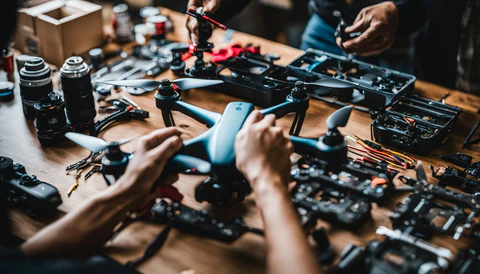In recent years, drones have transformed from niche gadgets into essential tools across various industries, including photography, agriculture, delivery services, and even emergency response. As interest in drone technology continues to soar, the question arises: how does one build the perfect drone? This article delves into the foundational elements and innovative features that come together to create a drone capable of excelling in diverse applications while maintaining user-friendliness and reliability.
From selecting the right components and understanding aerodynamics to incorporating cutting-edge technology such as GPS and obstacle avoidance systems, building the ideal drone requires a blend of technical knowledge and creativity. Whether you are a hobbyist looking to enhance your flying experience or an entrepreneur aiming to develop a specialized UAV for commercial use, mastering the art of drone construction can elevate your projects to new heights. Join us as we explore the essential steps and considerations needed to craft the perfect drone tailored to your specific needs.
Key Components for Your Drone
When embarking on the journey to build the perfect drone, selecting the right components is paramount. Key elements include a robust frame, efficient motors, and a reliable battery system to ensure optimal flight time and stability. The frame material influences the overall weight and durability, while motors play a critical role in lifting and maneuvering the drone. Incorporating premium products from trusted sources can dramatically enhance performance and reliability, making it easier for builders to achieve their desired specifications. For a comprehensive range of high-quality components, check out this website.

Advanced Features for Enhanced Functionality
Integrating advanced technology significantly elevates a drone’s capabilities. Features such as GPS for navigation, obstacle avoidance systems, and camera stabilization technology can transform a basic drone into a versatile tool suited for various applications. Understanding how these technologies work together is essential for ensuring optimal performance and user experience. Moreover, software systems that ease programming and customization will empower users to tailor their drones for specific tasks, enhancing efficiency and usability in both personal and professional settings.
In conclusion, building the perfect drone is a meticulous process that combines essential components with advanced technology, all tailored to meet specific user needs. By carefully selecting sturdy materials, high-performance motors, and efficient battery systems, along with incorporating GPS, obstacle avoidance, and stabilization features, hobbyists and entrepreneurs alike can craft a UAV that not only excels in flight but also delivers unparalleled functionality across diverse applications. As this technology continues to evolve, the potential for innovation in drone design and capabilities is endless, inviting enthusiasts to push boundaries and explore new horizons in aerial exploration and utility. Ultimately, the perfect drone is one that harmoniously balances performance, reliability, and user-friendliness, elevating any project to remarkable heights.



